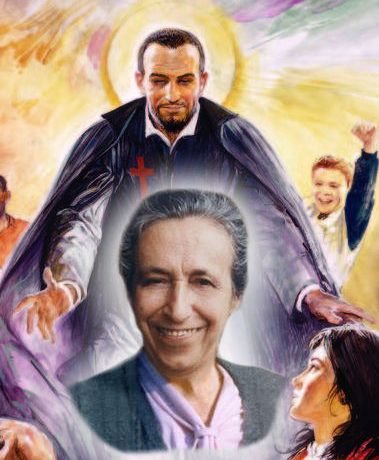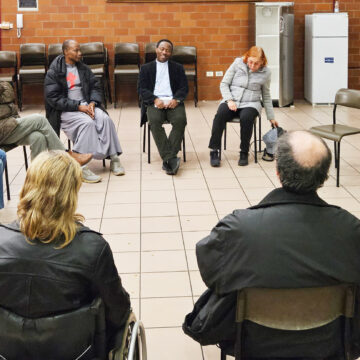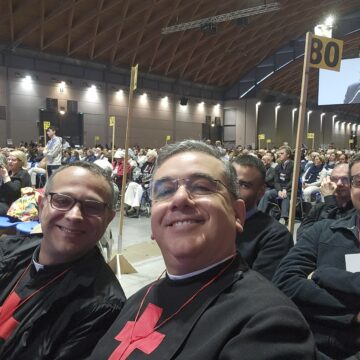 St. Camillus was a great presence in the life of Germana Sommaruga. A model? No, a ‘brother’, a friend with whom she felt in harmony, despite the centuries that separated them: she always felt the joy of being born on the same day, 25 May (she in 1914, he in 1550). A sign of destiny?
St. Camillus was a great presence in the life of Germana Sommaruga. A model? No, a ‘brother’, a friend with whom she felt in harmony, despite the centuries that separated them: she always felt the joy of being born on the same day, 25 May (she in 1914, he in 1550). A sign of destiny?
Only her sensitivity could understand the similarities that existed between her and that ‘rough bad soldier’ who, however, said that one had to ‘be at the side of a sick person with the affection that a tender mother has towards her sick only child’.
Probably she lived intensely many other similarities. Like Germana, St. Camillus never spoke about his ‘vision’, that is to say the moment when Christ on the crucifix detached his arms from the cross to encourage Camillus to begin his work; Camillus, as well, experienced the deep anxiety of seeing his followers, in the Order that he had founded, not sufficiently ‘martyrs to love’, not totally directed – body and soul – to service to the suffering; Camillus, too, bore with pain for the whole of his life the sore on his foot, pain offered up in union with the suffering Christ; Camillus, as well, experienced perceiving his inadequacy in relation to the evangelical ideal, always feeling that he was ‘a very bad sinner and a firebrand of hell’, albeit with full dedication to the Lord.
About Camillus and his work Germana wrote, spoke and taught until the end of her physical strength, with various languages and various analyses, so that everyone could understand at their own level the messages that Camillus had communicated more with his life than with his words. In particular from an early age she wrote biographies of St. Camillus and articles for various journals of the Camillians.
She saw the contemporary relevance of Camillus and of his message of charity; understood his passion; understood the delicacy of his work at the side of sick people; admired his capacity to see the suffering Christ in everyone; desired the same resistance to hard work when it was a matter of serving…she constantly sought ever more suitable ways to introduce him to young people so that they could become impassioned of this vocation, and to health-care professionals of all categories so that in their skills there would be humanity, respect for the person.
‘Everywhere people suffer and people move!’ This was almost a motto of Germana!
















Camillians on Facebook
Camillians on Twitter
Camillians on Instagram